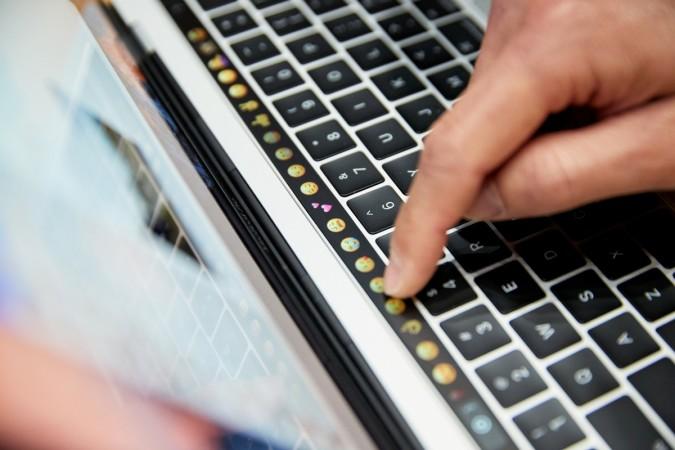From ditching the headphone jack on the iPhone 7 to bringing the most advanced facial recognition technology (Face ID) and making the unsightly notch on the iPhone X a design element, Apple has always been one of the very few companies that break from the old and set new trends for others to follow.

And after all these trend-setting innovations, Apple engineers, at its Innovation labs in Cupertino, must have asked themselves "what's next?" Now, its current iPhone line-up, despite not having certain things in place (read the headphone jack), is still the benchmark in terms of smartphone design. But Apple's laptops -- the MacBook -- haven't seen a radical change so far, save for the thinness and the digital touchbar that was introduced in the 2016 upgrade.
But now, owing to Apple's love of removing things from its products, the MacBook might as well lose an important aspect of it being called a laptop -- the physical keyboard.
According to Apple's recently leaked patent, the physical-button keyboard on the MacBook could be ditched in favor of a secondary OLED touchscreen keyboard with virtual buttons. The patent talks about a 'dual display equipment' that eliminates not only the physical keyboard but also the trackpad as well.
The patent shows thick bezels on what could be the touchscreen keyboard. However, there's also a hinge separating the display and the keyboard. The two screens will either fold together like a laptop or detach like a 2-in-1 computer, meaning users can convert it from a laptop to a tablet computer.

While just the patent does not guarantee that Apple is actually developing such a product, the idea of a MacBook without a physical keyboard is something that might be on Apple's mind. The company has already shown us a glimpse of its "intention" by replacing the function keys with an all-digital Touchbar on the 2016 MacBook Pro.
Even if Apple comes up with a dual touchscreen MacBook with virtual buttons on the keyboard in the future, it wouldn't be the first time we will be seeing a button-less keyboard. Lenovo has already revealed a similar concept a few years ago with the Yoga Book – an Android-based 2-in-1 laptop-cum-tablet that had a detachable touchscreen keyboard.

However, Lenovo's concept never managed to attain mainstream popularity as consumers preferred the tactile feedback of the physical buttons on a traditional keyboard. But Apple has a neat trick up its sleeves where it replicates tactile feedback though electromagnets, something that you'll notice with the iPhone Home button and the trackpad on the MacBook Pro. The electromagnets create a fake ticking feedback, giving users the sense of clicking without actually being clicked. The feedback is so accurate that users will never know that the click is completely fake.
We wouldn't be surprised if Apple uses the same tactile feedback technique with the touchscreen keyboard on upcoming MacBooks.
That said, like all its other innovations, Apple could make touchscreen keyboards without any physical buttons a reality and something that other manufacturers might want to adopt in the future. But the question is, would you like to get the natural feeling of click or a fake sensation created by tiny electromagnets inside a touchscreen.









